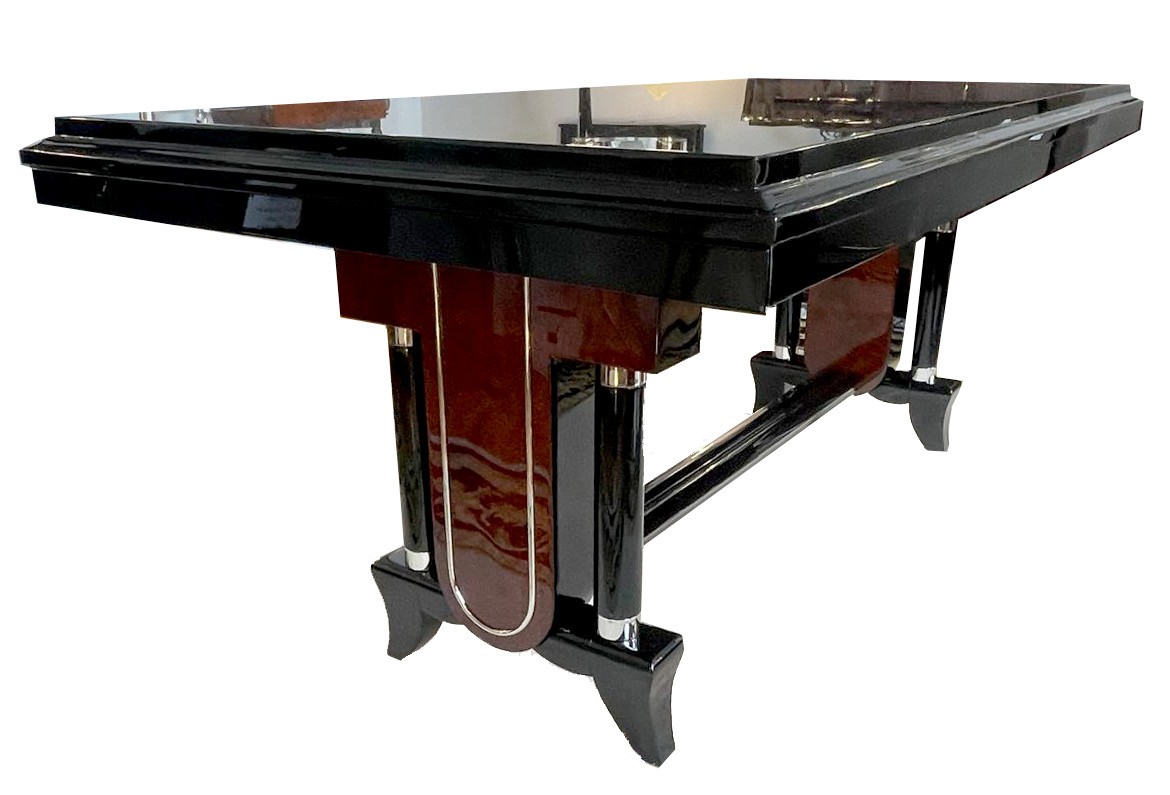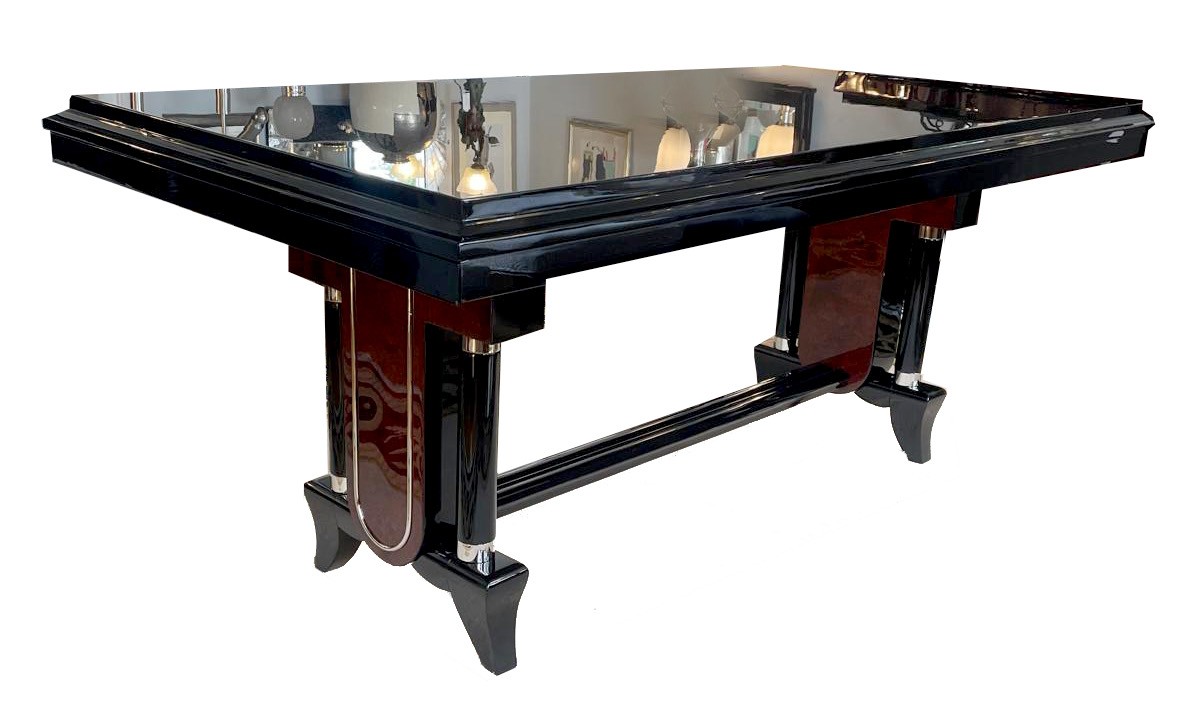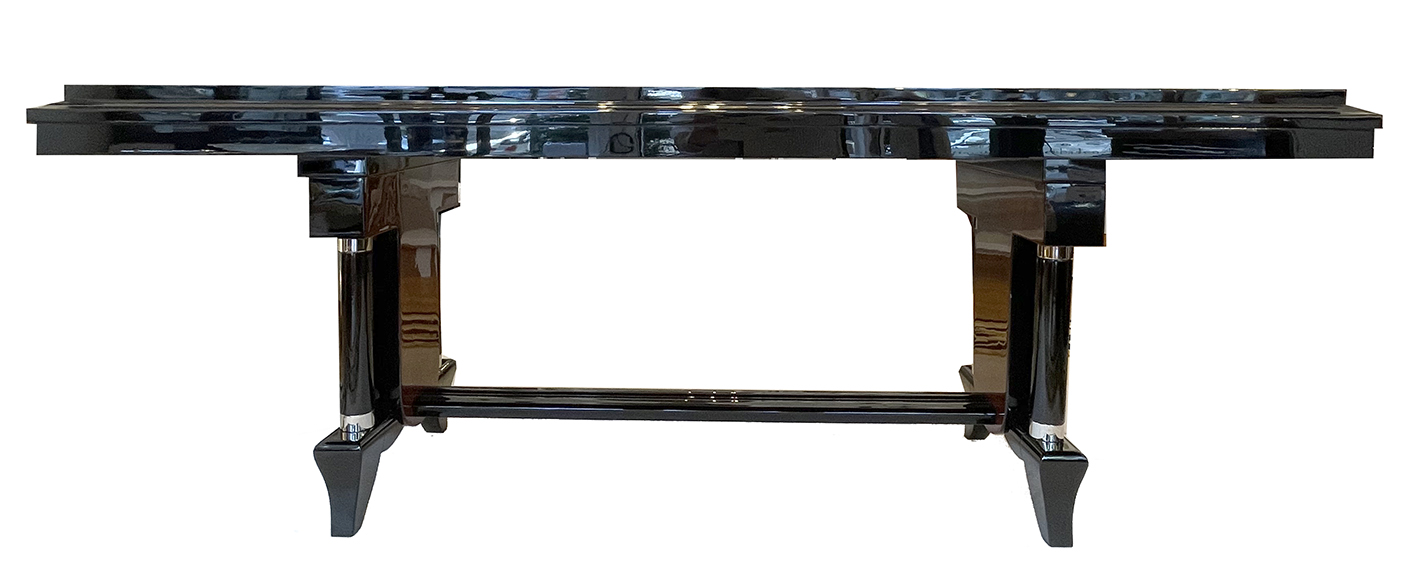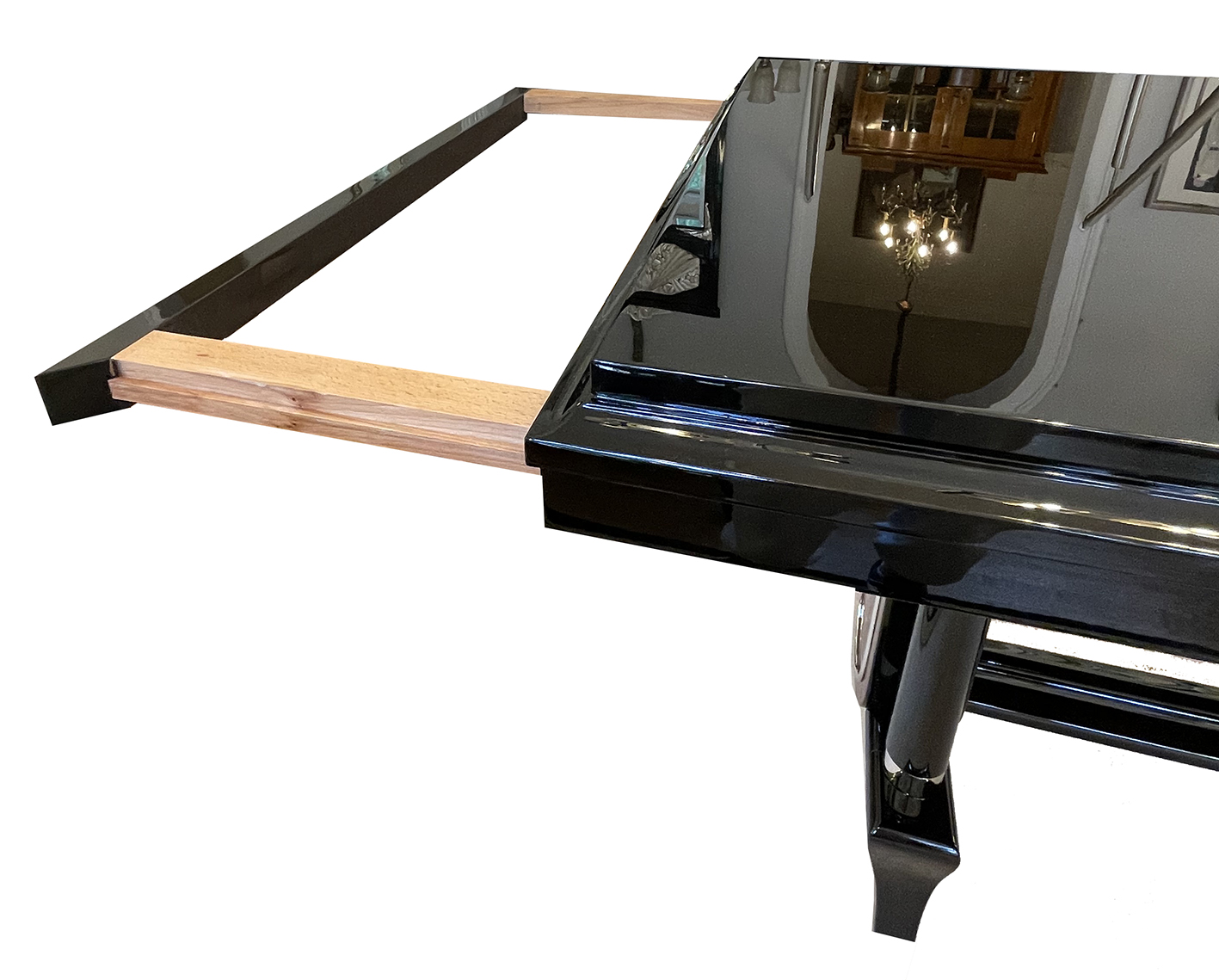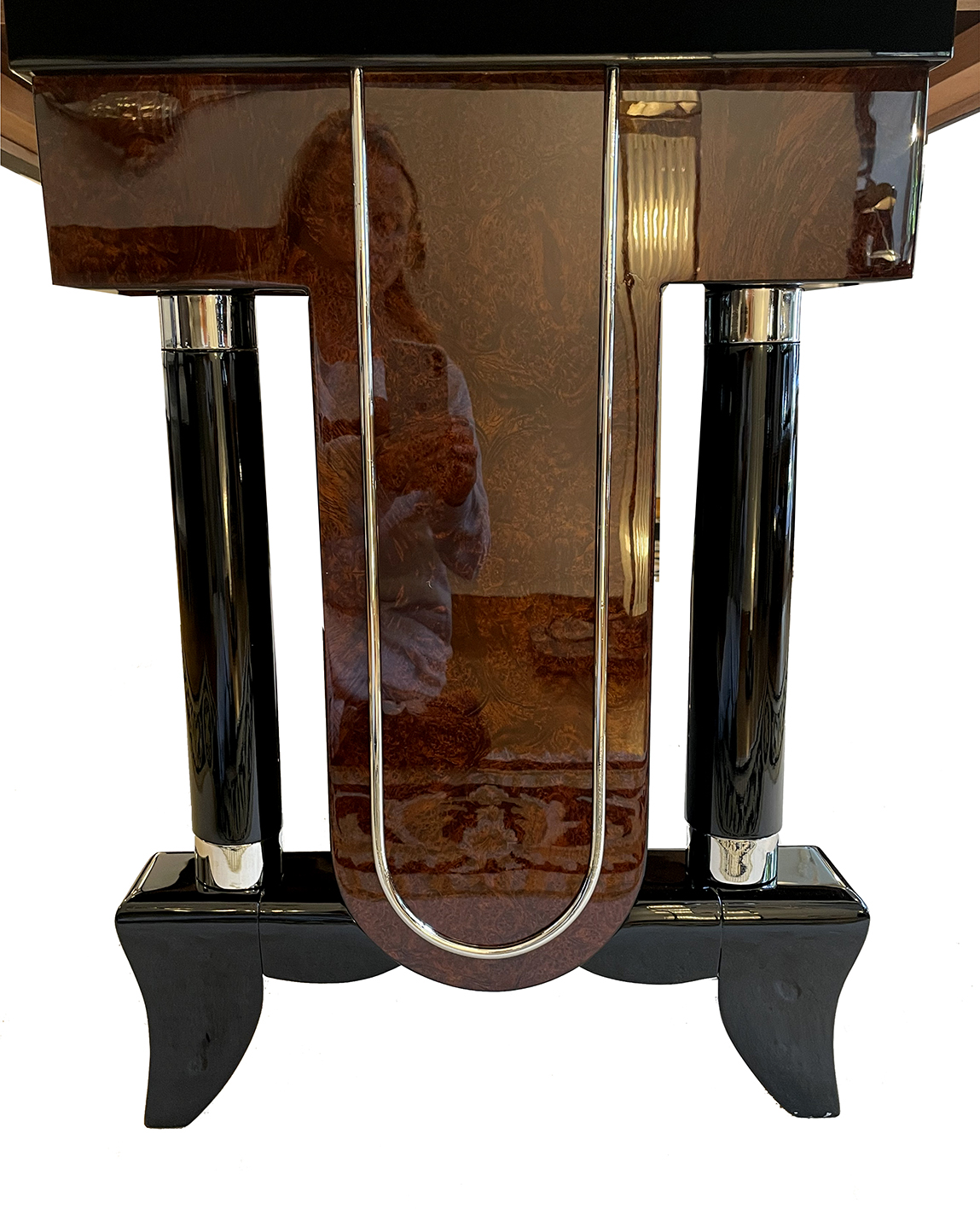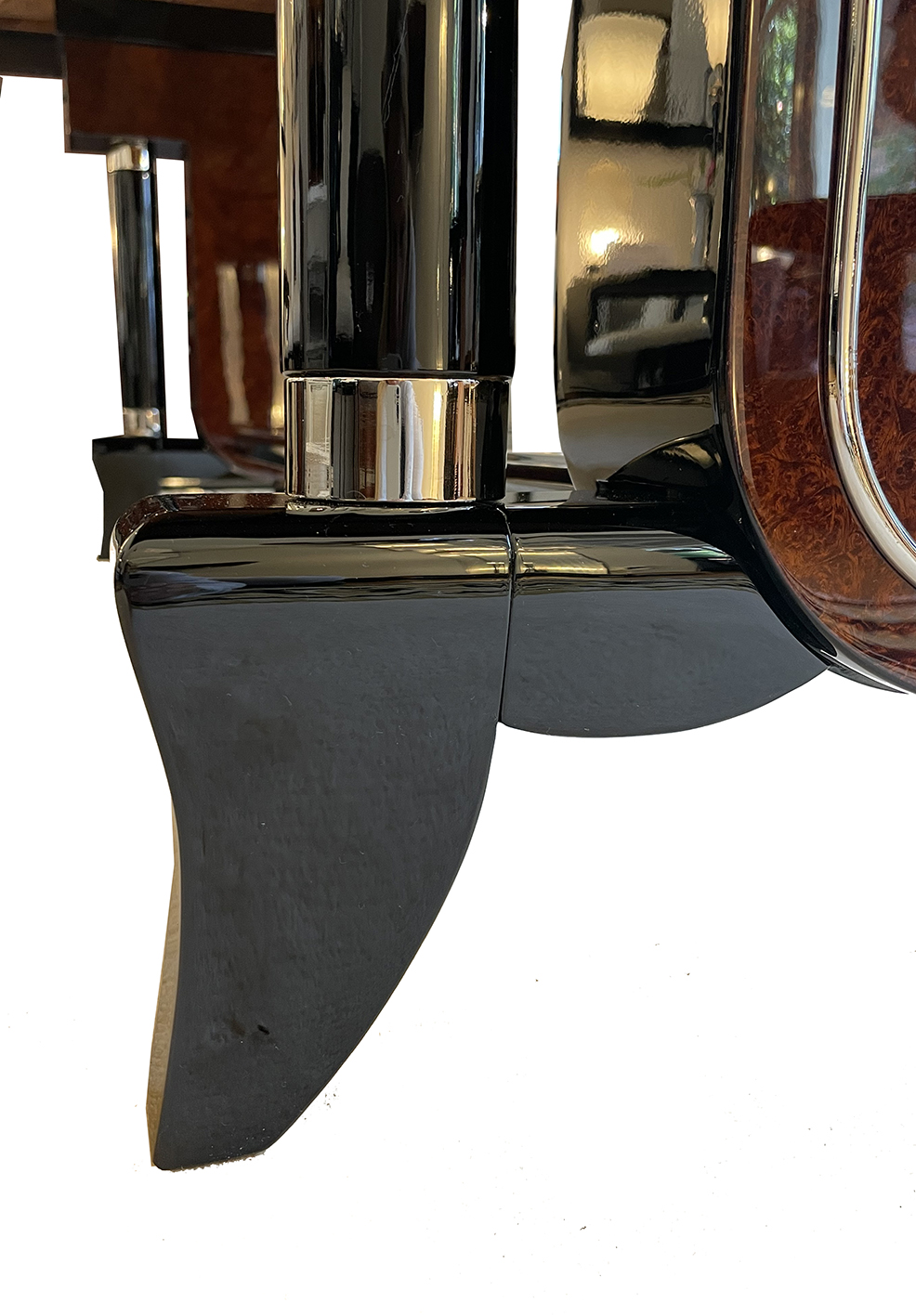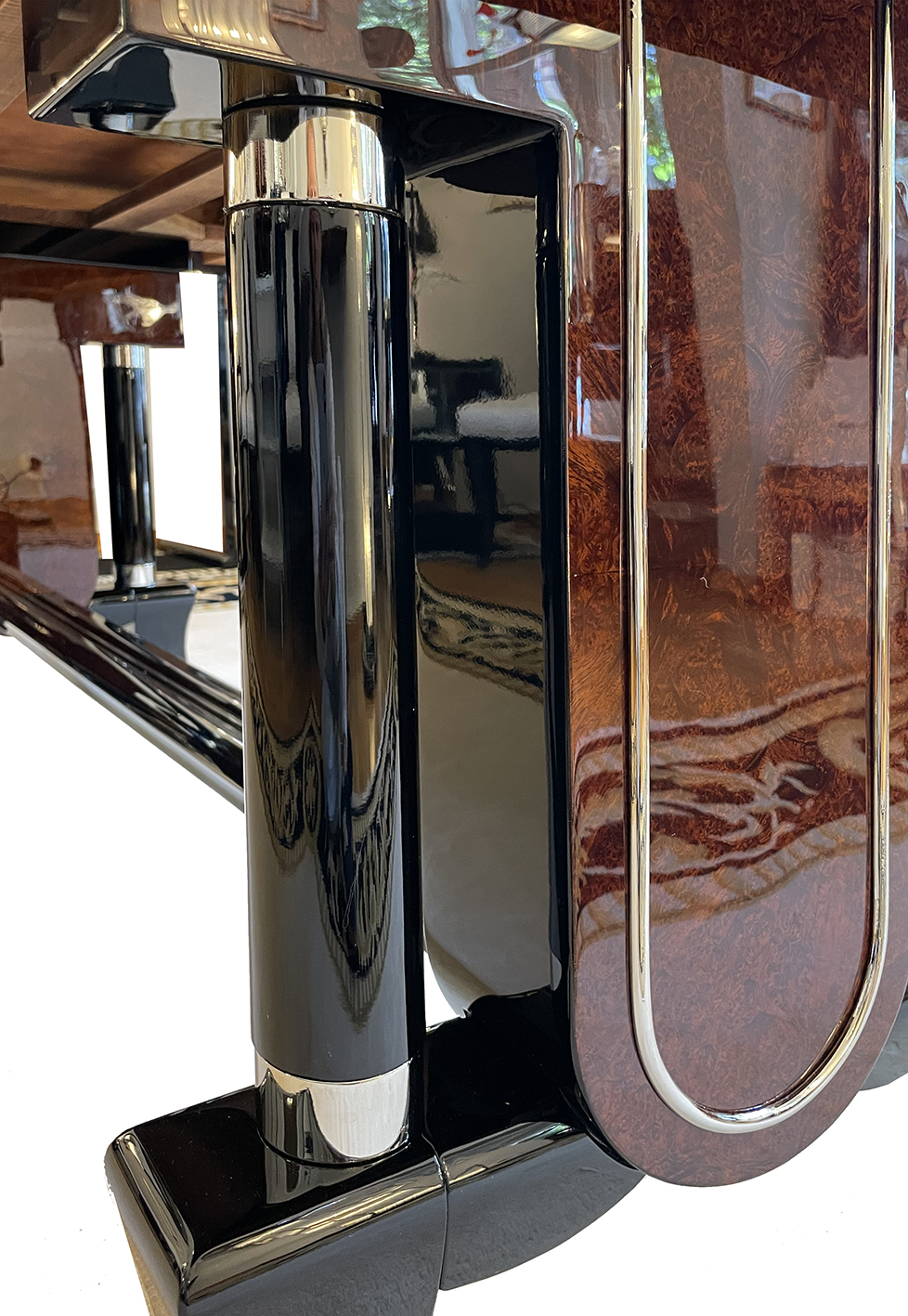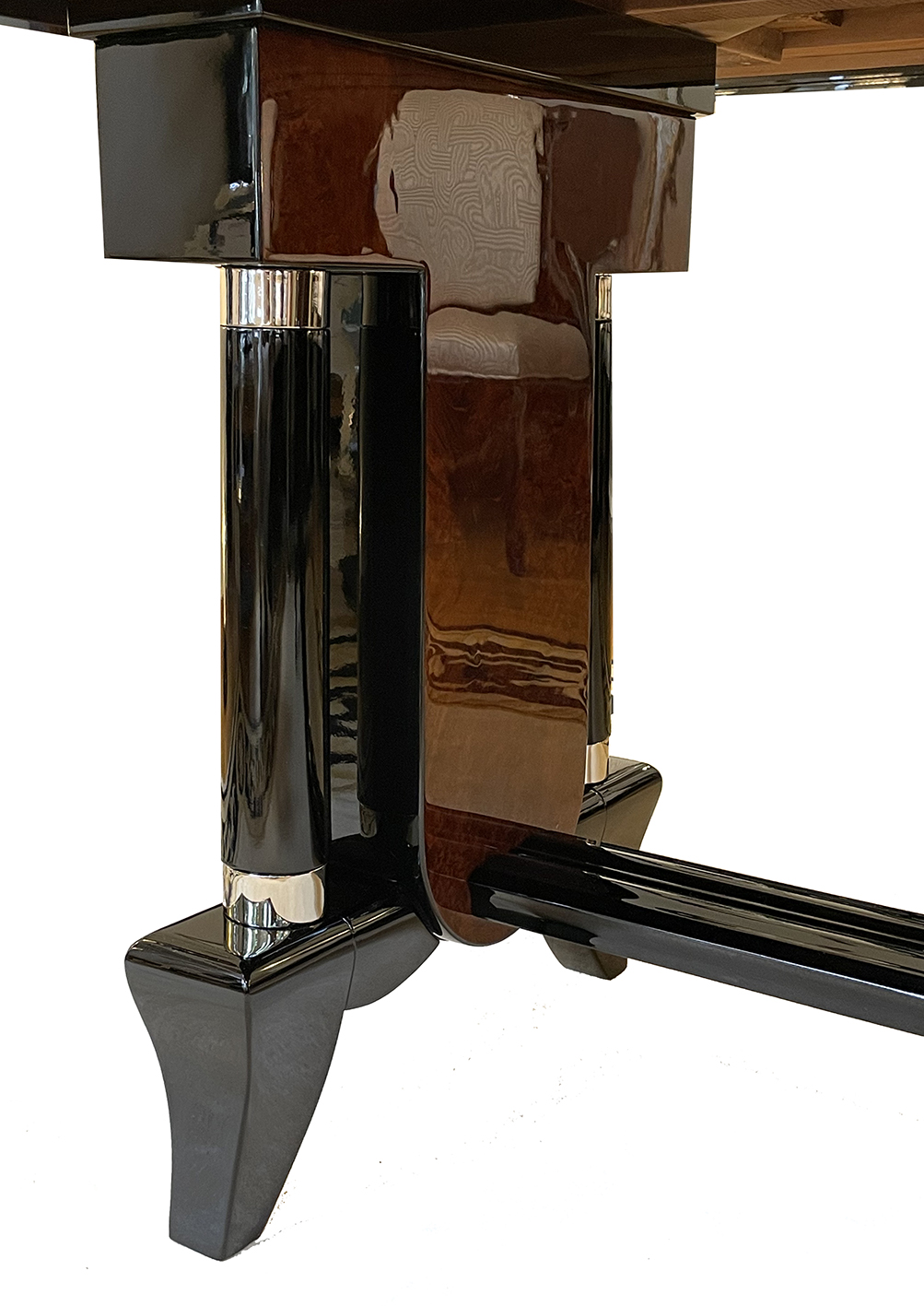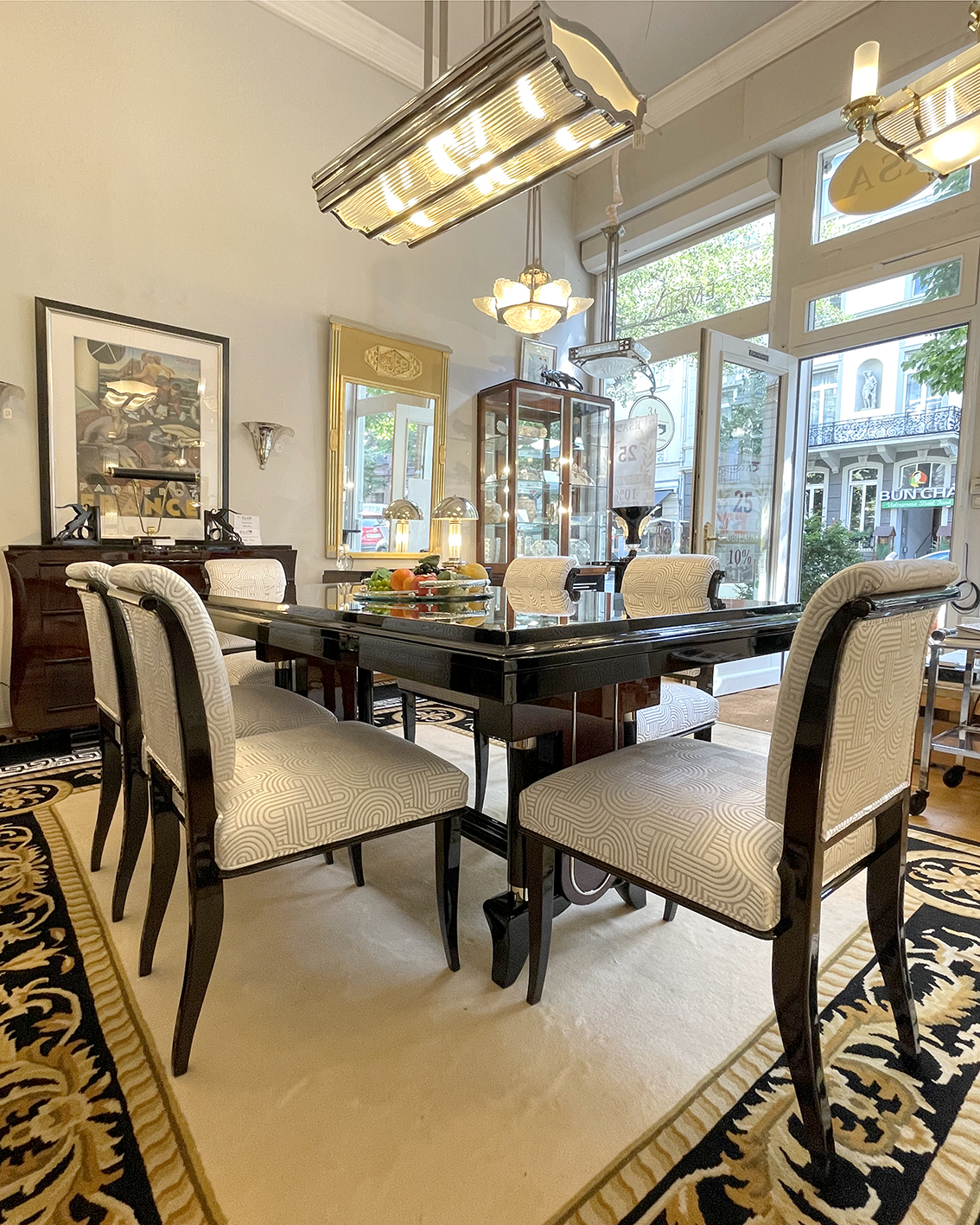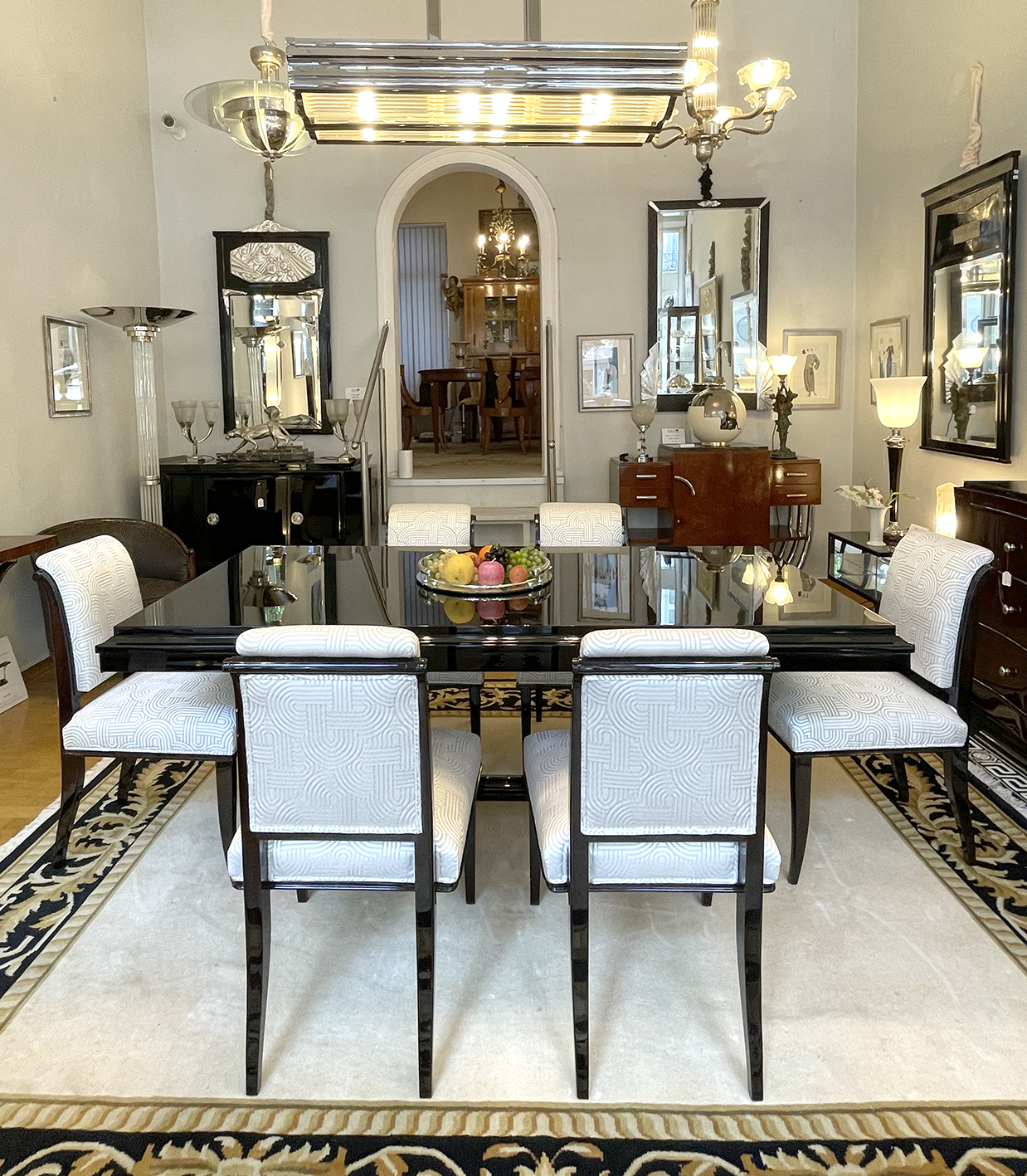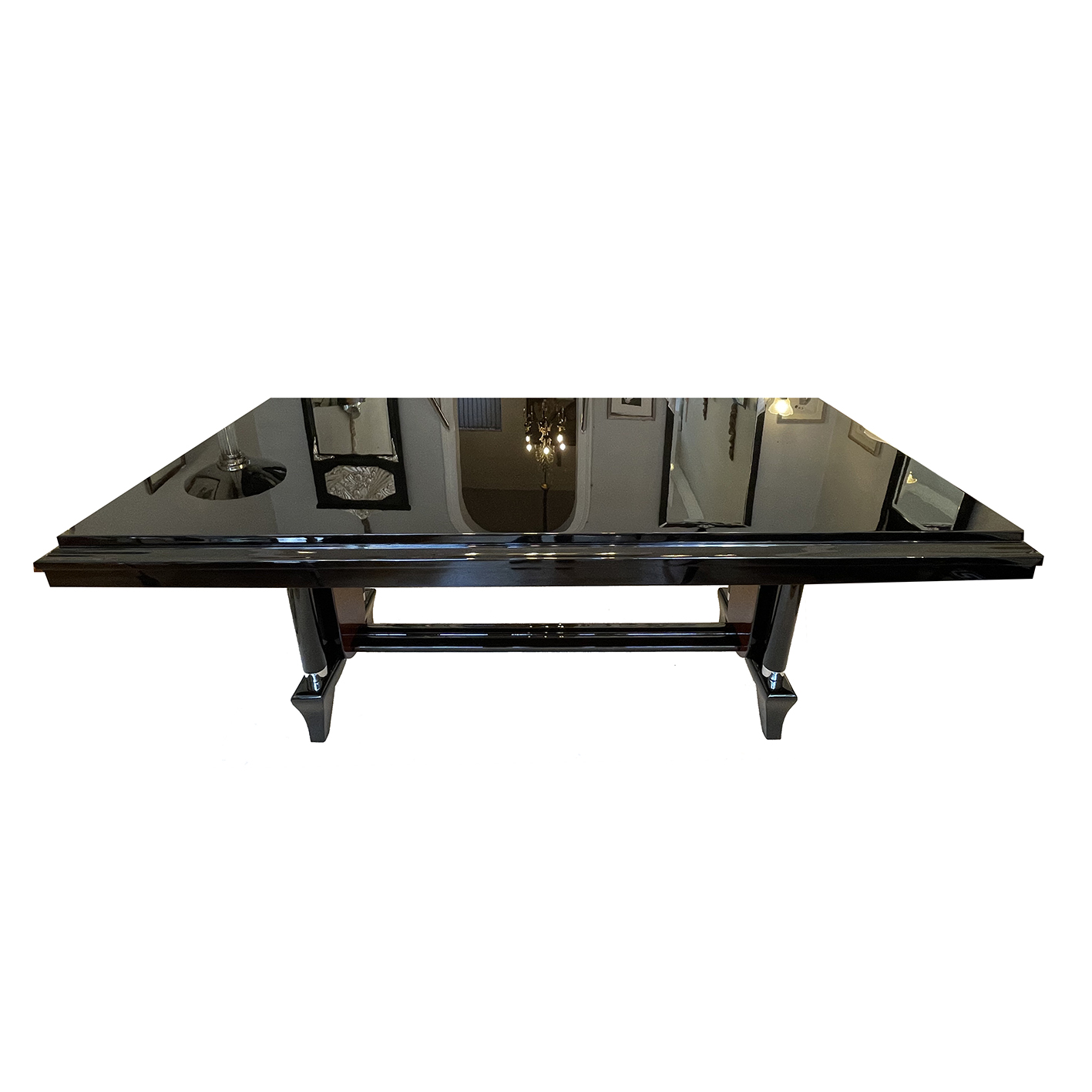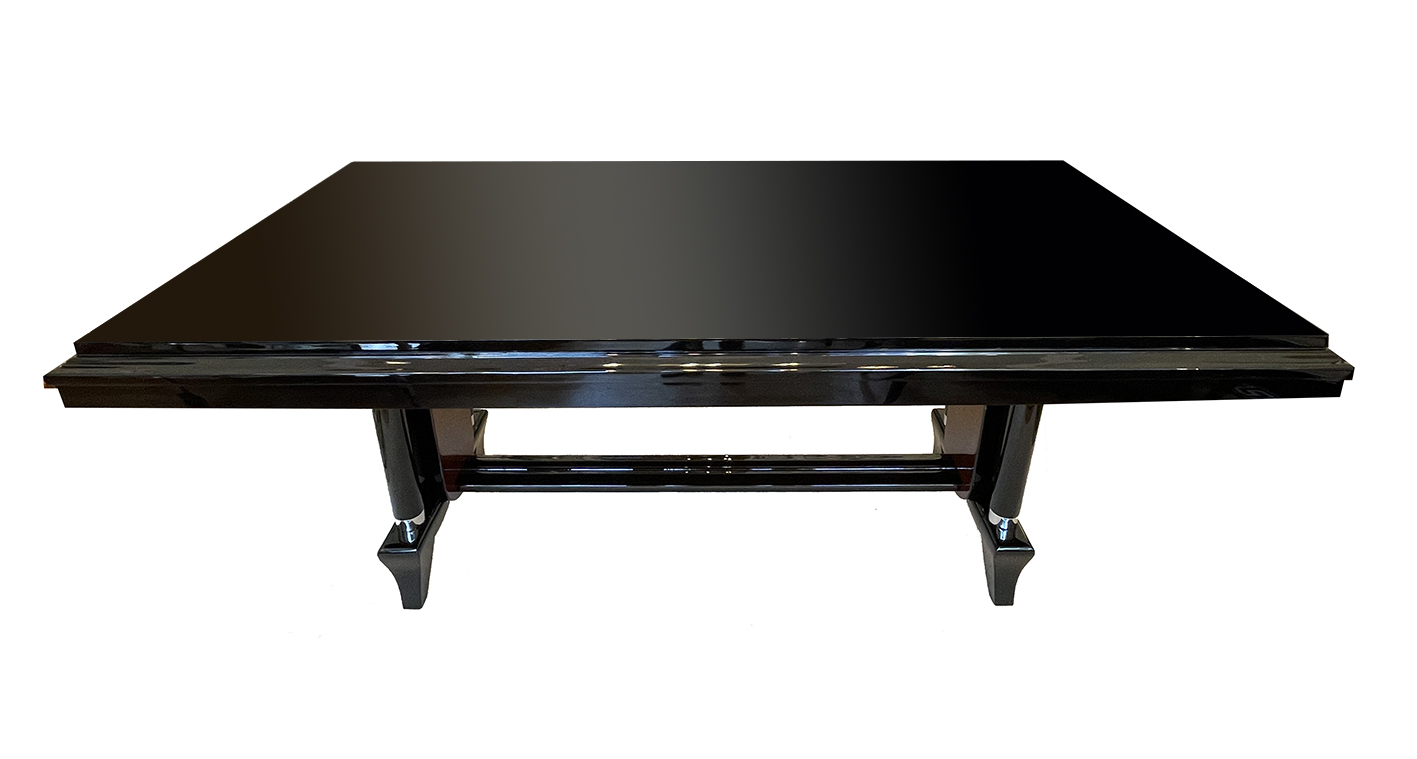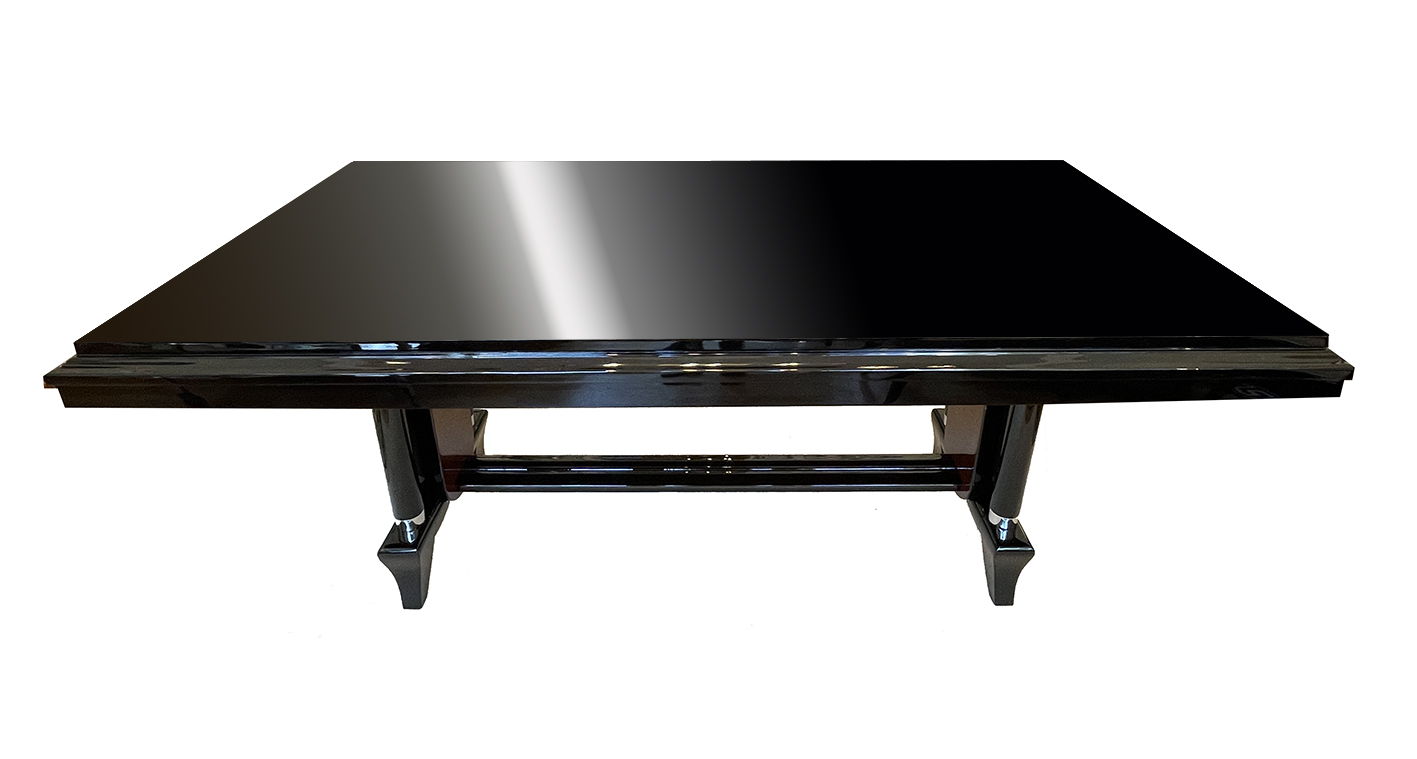Art Deco dining table
Nr. 2738 | 10.800,-- Euro
Art Deco Extending Table
Attributed to the cabinetmaker “Jules Leleu.”
France, circa 1930.
Amboyna wood veneer with nickel-plated fittings and black lacquer. Dining table from the 1920s in France.
The lyre-shaped base in Amboyna wood, flanked by fully sculpted columns, is connected by a double-profiled connecting bar. Additionally, the wonderfully preserved nickel-plated fittings testify to the finest cabinetmaking craftsmanship and excellent Art Deco skills.
Height: 80 cm | Length: 185 cm | 265 cm | Depth: 96 cm
2 extension shelves, each 40 cm long.
Art Deco dining table
Elegance and style
The Art Deco era is characterized by elegance and style. This is clearly evident in the furniture, especially in the dining tables.
Everyone enjoys sitting down at such a beautiful dining table. Nowadays, it’s rare to see original black lacquered dining tables like this one. The leg design is particularly beautifully achieved with a large nickel-plated metal clasp reminiscent of a brooch.
This elegant, original Art Deco extending table comes from France and was manufactured around 1930. The table frame is made of ebonized wood, meaning it has been painted black. It is extendable, with newly made 40 cm long shelves each, providing space for more guests.
Art Deco extending tables are pieces of furniture in the typical design of the Art Deco era, which were popular in the 1920s and 1930s. These tables are usually made of fine materials such as ebony, mahogany, or walnut. Clean, geometric shapes and shiny chrome decorations are typical.
Large Parties
Art Deco extending tables are characterized by the fact that they offer the possibility of changing the size of the table. This is done using shelves that can be inserted into the table, thus enlarging the tabletop.
Art Deco extending tables are perfect for larger parties or special occasions where more space is needed.
Black extending tables from the Art Deco period, in particular, are in high demand and rare.
Ebonized wood is wood that has been treated with a layer of black lacquer or stain to create a dark, glossy surface. This technique was particularly popular during the Art Deco era. It was often used for furniture and other decorative objects. Ebonized wood lends the objects an elegant, timeless, and modern appeal.
Art Deco International Style
Art Deco furniture production, which emerged in the 1920s and 1930s, is an international art style for several reasons:
Influences from different cultures: Art Deco was shaped by a variety of cultural influences.
The movement borrowed elements from various regions and cultures, including Egyptian, African, Asian, and European art and design. This resulted in a synthesis of styles and forms that transcended national borders.
Dissemination through World’s Fairs:
The Art Deco movement gained widespread international recognition through World’s Fairs in the 1920s and 1930s. These exhibitions, such as the 1925 Paris Exposition and the 1933 Chicago World’s Fair, showcased the best works in the Art Deco style. They attracted visitors from all over the world.
Use of modern materials and techniques: Art Deco utilized modern materials such as chrome, steel, glass, and plastics. These materials were internationally available and popular at the time. The movement also emphasized a certain rationality and functionality in design. This fit well with the technological advances of the time.
Influence of fashion and glamour:
Art Deco was heavily influenced by the fashion and glamour of the era. The movement was reflected not only in art and design, but also in architecture, fashion, and jewelry design. This aspect contributed to the international spread of the style.
Consistent aesthetic approach:
Despite the diverse cultural influences and the international spread of the style, Art Deco had a certain coherent aesthetic. This contributed to Art Deco works being easily recognizable around the world.
Overall, the Art Deco movement is considered an international art style due to its broad international acceptance, aesthetic influence, and adaptability to different cultural contexts.
This incredible extending table needs the perfect seating like these 6 Art Deco chairs in black lacquer. another outstanding dining experience you will have with this Museum-quality Art Deco dining table by “Dominique”.
Next to this Dining table we offer this Pair of entree bowls.
Art Deco at RSA Wiesbaden
You can find more Art Deco cabinets, Art Deco chests of drawers and Art Deco lamps in my shop in Wiesbaden. Regine Schmitz-Avila – your specialist for French Art Deco furniture and art objects from around 1930.Art Deco at RSA Wiesbaden
